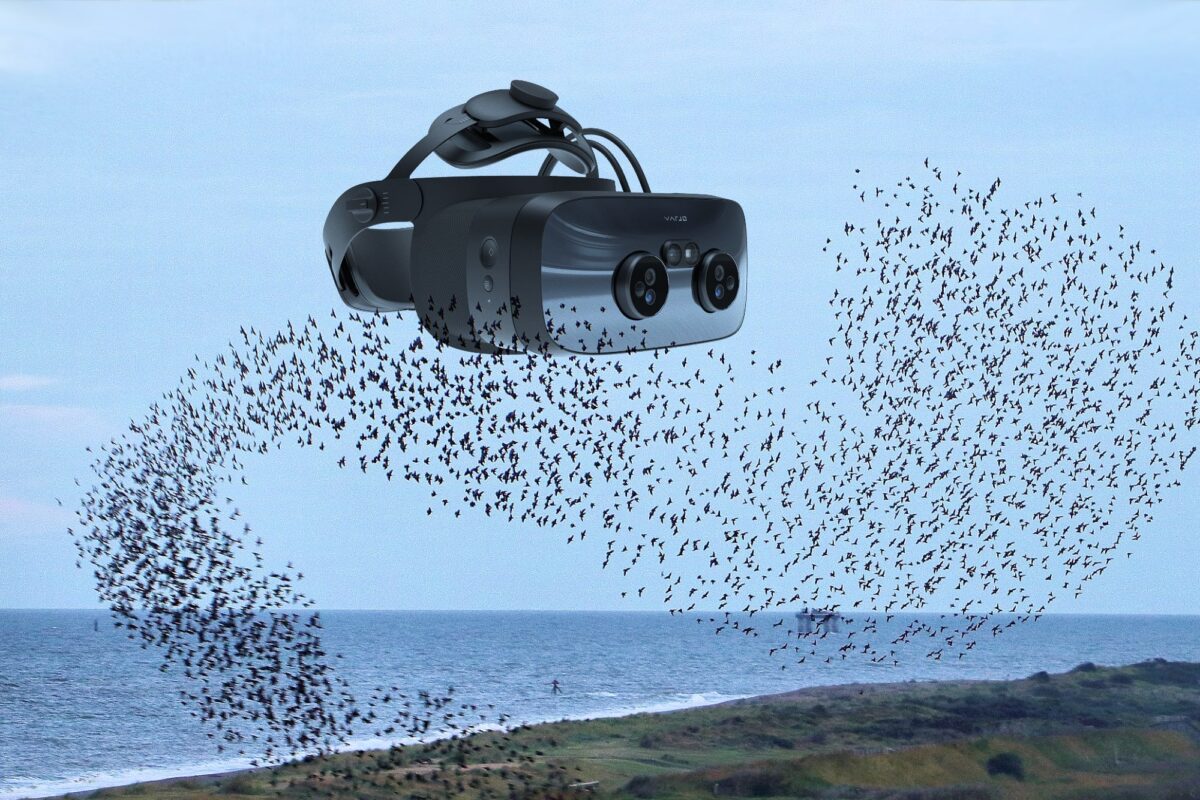XR experiment: 12,000 birds in an atrium

Varjo demonstrated the advanced mixed-reality capabilities of its headset by placing 12,000 "birds" in its atrium, and the murmuration twisted and flowed around beams and columns.
The avians in Varjo's example were not the crazed killers that Hitchcock imagined in the classic thriller, "The Birds." Instead, each "bird" was represented by a V-shape.
While fixed wings simplify the task, flying 12,000 virtual objects through a real-world environment and displaying this in a roaming mixed-reality headset is challenging.
Varjo posted the video on its blog and also on YouTube.
The video starts with a glimpse at the computer used, then pans up to a burst of activity high above as a "flock of birds" appears. Within 20 seconds, we see that this is what is seen within an XR headset as a person walks around the atrium.
How Varjo created the video
The demonstration used Varjo's XR-3 headset, an advanced and expensive model designed for enterprise use.
While it contains LiDAR sensors to detect depth, the range is limited to 16 feet (5m). That might be why Varjo created a 3D model of the atrium to define the physical layout in advance. A Varjo tracker (QR code) helped align the actual and virtual spaces.
The app was made with Unity and used the ECS Swarm component to handle the flocking behavior. V-shapes swarmed through Varjo's lobby and also flew around beams with convincing occlusion, hiding the "bird" when appropriate.
Varjo XR-3 technology
This demonstration demanded a very expensive, mixed-reality headset and a powerful computer. The Varjo XR-3 costs over $6,000, and the Nvidia RTX A6000 GPU that handled the flocking calculations and graphics rendering is priced at $4650.
The computer specifications are great enough that Varjo anticipates that a future version might use ray tracing. It's also possible to more than double the number of "birds" to over 25,000 virtual avians. Within the atrium, that could have been visually overwhelming.
Mixed reality is possible, with more affordable systems. Most newer standalone headsets, like the Meta Quest Pro, Pico 4, and HTC Vive XR Elite, include a passthrough camera.
Examples include the Spatial Fusion demo, various mixed-reality apps, and experimental games like FPS Enhanced Reality.
If a similar simulation was attempted on a standalone VR headset, the number of birds might be limited, and the resolution would be lower than the 2880-by-2720 of the Varjo XR-3. A PC VR headset is currently needed for this experience.
This high-performance hardware demonstration gives us a glimpse of what will be possible with the compact, all-in-one VR headsets and AR glasses of the future.
Note: Links to online stores in articles can be so-called affiliate links. If you buy through this link, MIXED receives a commission from the provider. For you the price does not change.